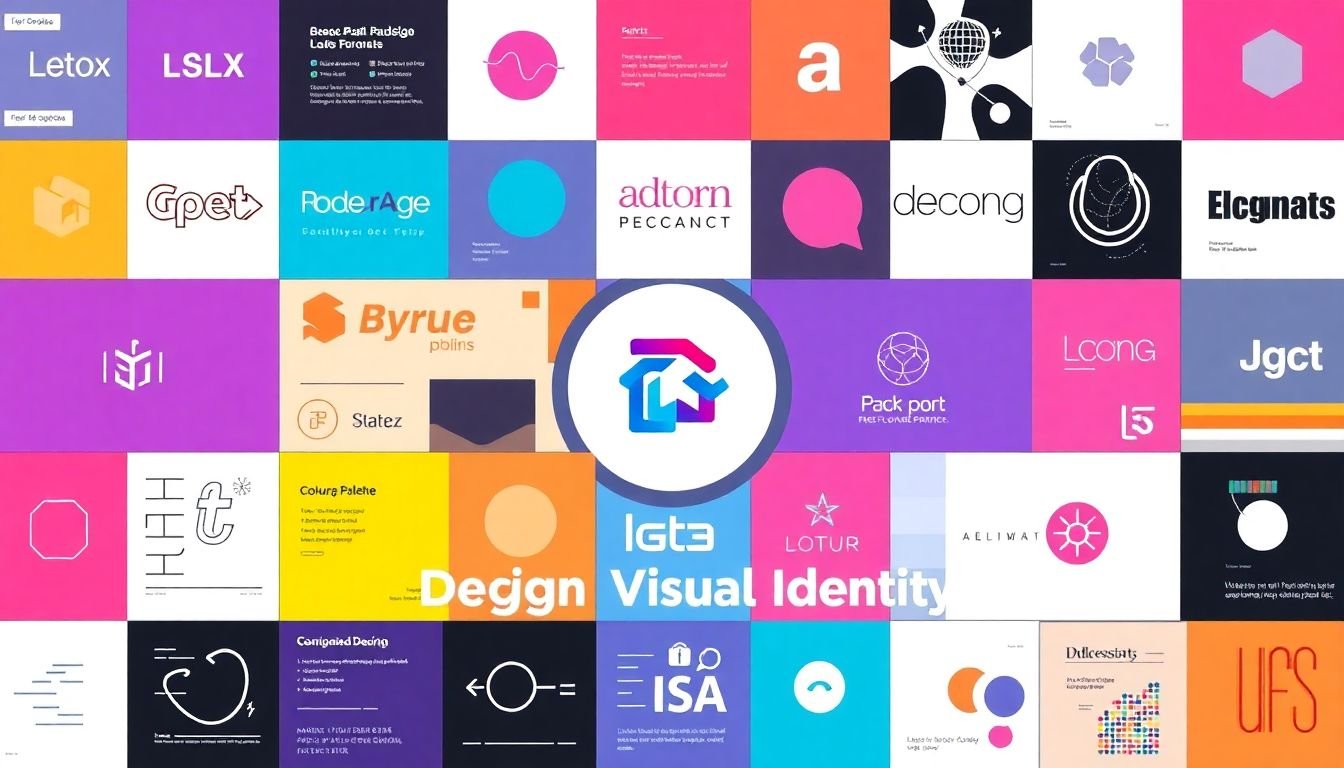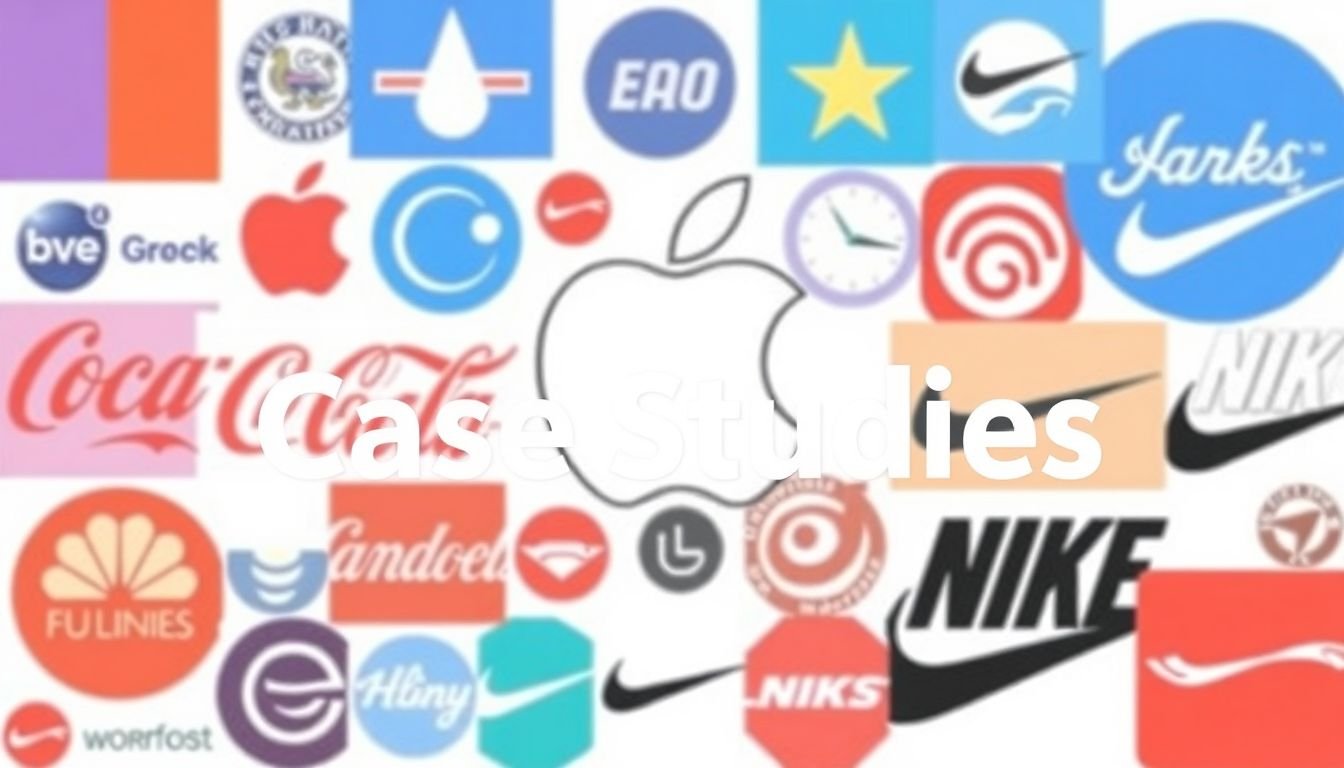
Table of Contents
Ever wondered why some businesses thrive while others struggle, even in the same market? The secret lies in their brand strategy, a powerful compass that guides businesses towards marketing success. But what exactly is a brand strategy, and how can you craft one that positions your business for triumph? Let’s dive into ‘Brand Strategy 101: A Step-by-Step Guide to Positioning Your Business for Success’.
First, let’s agree on one thing: in today’s crowded marketplace, standing out is not a luxury but a necessity. According to a study by Deloitte, 80% of consumers are more likely to do business with a company that offers personalized experiences. This means your brand needs to be more than just a logo or a tagline; it needs to be a promise, an experience, a relationship. That’s where a solid brand strategy comes into play.
Now, let’s make a promise. By the end of this article, you’ll have a clear understanding of what a brand strategy is, why it’s crucial for your business, and a step-by-step guide to create one. You’ll learn how to define your brand, understand your audience, and differentiate your business in a way that resonates with your customers and drives growth.
But before we dive into the nitty-gritty, let’s consider this: If Coca-Cola were to launch tomorrow, would it succeed? The answer is a resounding yes, not because of its product, but because of its brand. Coca-Cola’s brand strategy has been so successful that it’s one of the most valuable brands in the world, worth over $86 billion. Imagine what a well-crafted brand strategy could do for your business.
So, are you ready to take your business from ordinary to extraordinary? Let’s embark on this journey together. In the following sections, we’ll explore the art and science of brand strategy, providing you with a comprehensive guide to position your business for success.
Crafting Your Business’s Identity for Marketing Triumph
In the grand theater of commerce, crafting your business’s identity is akin to writing a captivating script that sets the stage for marketing triumph. Your business identity, or brand, is the protagonist of this story, a character that must be compelling, consistent, and authentic. It’s the sum of your business’s values, mission, and personality, distilled into a unique essence that resonates with your audience. Imagine your brand as a person; what would they say, how would they act, what would they stand for? This is the essence of branding, and it’s the foundation upon which your marketing efforts will stand tall. A well-crafted identity provides a clear roadmap for your marketing strategies, ensuring that every touchpoint, from your website to your social media presence, tells a cohesive and compelling story. It’s the secret sauce that makes your business unforgettable, turning casual observers into loyal fans. So, roll up your sleeves, let your creativity flow, and craft a business identity that’s as unique as your fingerprint. After all, in the vast ocean of businesses, it’s your identity that will be the lighthouse guiding your customers home.

Understanding Brand Strategy
Imagine you’re at a bustling market, and you’re hungry for a delicious sandwich. You have two stalls to choose from: one is a sleek, modern van with neon lights and a catchy jingle playing, offering ‘Gourmet Sandwiches
- The Taste of Paris in Every Bite’. The other is a simple, rustic cart with a hand-painted sign, serving ‘Mama’s Famous Sandwiches
- Just Like Grandma Used to Make’. Both are selling sandwiches, but they’re targeting different customers with different promises, or what we call ‘brand strategies’.
Brand strategy is like the compass that guides a business, defining who it is, who it serves, and how it connects with its audience. It’s not about what you do, but why you do it and who you do it for. It’s the heart and soul of your business, the reason customers choose you over others.
Now, you might think, ‘Isn’t that just marketing?’ Not quite. Marketing is the how
- the tactics, the channels, the campaigns. Brand strategy is the why
- the purpose, the values, the personality. It’s the reason your marketing works. It’s like the difference between having a destination (brand strategy) and having a map to get there (marketing).
Let’s take Apple as an example. Their brand strategy is all about simplicity, innovation, and premium quality. This strategy influences everything they do, from their product design to their advertising. Their ‘Get a Mac’ campaign was a perfect reflection of this strategy, positioning Macs as the cool, simple, and innovative choice against the stuffy, complex PCs. It was a marketing campaign, but it was deeply rooted in Apple’s brand strategy.
In essence, brand strategy is the foundation upon which your business is built. It influences your business positioning, guiding you to the right market, the right customers, and the right products or services. It’s the secret sauce that makes your marketing work, because it ensures that everything you do is authentic, consistent, and true to who you are as a business. It’s the reason why customers connect with you, why they choose you, and why they stay loyal to you.

Defining Your Brand
Defining your brand is an exciting journey that helps you stand out in the market and connect with your audience on a deeper level. Let’s dive into this process, step by step.
First, identify your unique value proposition. This is the reason why customers should choose you over your competitors. It’s the special something that sets your business apart. To find it, ask yourself: What problem does my business solve? How do I solve it differently or better than others?
Next, craft your mission statement. This is your business’s purpose, the reason you do what you do. It should be clear, concise, and inspiring. It’s not just about making money; it’s about the impact you want to make on your customers and the world.
Now, let’s talk about your vision. This is where you see your business in the future. It’s your long-term goal, your dream. It should be ambitious yet achievable, and it should guide your decisions and actions.
Lastly, define your values. These are the principles that guide your business and your team. They should be authentic and reflected in everything you do. To identify them, think about what’s most important to you and your team, and how you want to be perceived by your customers.
Once you’ve defined these elements, you’ll have the core of your brand strategy. They’ll guide your marketing, your customer service, and your overall business direction. They’ll make your brand consistent, recognizable, and authentic. So, take your time, be honest with yourself, and enjoy the process of defining your brand.

Identifying Your Target Audience
Identifying your target audience is not just important, it’s the cornerstone of any successful marketing strategy. It’s like trying to navigate a vast ocean without a map; you might drift aimlessly, wasting time and resources, or you might stumble upon the right shore by sheer luck. But with a well-defined target audience, you’re like a seasoned sailor with a precise map, steering your ship confidently towards your destination.
Creating buyer personas is the first step in this journey. A buyer persona is a semi-fictional representation of your ideal customer, based on market research and real data about your existing customers. Here’s a step-by-step guide to create them:
-
Research Your Existing Customers:
- Start by analyzing your current customer base. What are their demographics? What are their interests? What problems do they face?
Conduct Market Research:
- Use surveys, interviews, and focus groups to gather more data. Online tools and resources can also provide valuable insights.
Identify Commonalities:
- Look for patterns and commonalities in the data. These will help you define your target audience.
Create Your Personas:
- Based on your findings, create detailed profiles of your ideal customers. Include their name, photo, job title, goals, challenges, hobbies, and preferred content types.
Once you’ve created your buyer personas, they should inform every aspect of your brand strategy. Here’s how:
Product Development:
- Your personas should guide the creation of your products or services. What features do they need? What problems do they want to solve?
Marketing Strategy:
- Your personas should dictate where you advertise, what kind of content you create, and how you communicate with your audience.
Sales Strategy:
Your personas should influence your sales approach. How do they prefer to communicate? What are their objections?
In essence, understanding and defining your target audience is not just about knowing who you’re talking to, it’s about speaking their language, addressing their needs, and providing them with value. It’s about turning strangers into customers, and customers into advocates.

Differentiating Your Brand
In the bustling marketplace of today, where countless brands vie for attention, standing out from the crowd is not just an advantage, it’s a necessity. This is where differentiation comes into play, a strategic maneuver that transforms your brand from a mere commodity into a unique, compelling entity.
Differentiation is not merely about being different for the sake of it; it’s about being distinctively better or different in ways that matter to your target audience. It’s about identifying your unique selling points (USPs) and leveraging them to create a brand that resonates with your customers on a deeper level.
So, how does one go about identifying these USPs? The journey begins with a deep dive into your brand’s DNA. Ask yourself: What makes your brand tick? What are its core values and beliefs? What problems does it solve for your customers? What emotions does it evoke?
Once you’ve unearthed these nuggets of truth, it’s time to communicate them effectively in your brand strategy. This is where storytelling comes in. Craft a compelling narrative around your USPs that connects with your audience on an emotional level. Use this narrative to guide your brand’s visual identity, tone of voice, and messaging.
Here are some strategies to help you communicate your USPs effectively:
- Be authentic: Ensure your USPs are true to your brand’s essence and not just marketing fluff.
- Be clear: Communicate your USPs in a way that’s easy to understand and remember.
- Be consistent: Ensure your USPs are reflected in every touchpoint of your brand.
- Be unique: Make sure your USPs are not generic and can’t be easily replicated by competitors.
In essence, differentiation is not just about surviving in today’s competitive market; it’s about thriving. It’s about creating a brand that not only stands out but also stands for something. So, go ahead, find your unique voice, and let it sing.

Crafting Your Brand Voice and Messaging
Crafting a compelling brand voice and messaging is akin to giving your business a unique personality, one that your target audience can relate to, understand, and ultimately, love. The first step in this journey is to understand your audience. Who are they? What do they value? What makes them tick? Once you’ve got a clear picture, you can start shaping your brand’s voice to mirror their language, tone, and style.
Your brand voice should be consistent across all touchpoints, from your website and social media to your email newsletters and customer service interactions. Here’s how you can maintain this consistency:
-
Develop a Voice and Tone Guide:
- This should outline your brand’s personality traits, the kind of language you use, and the kind you avoid. It should also include examples to illustrate your tone in different scenarios.
Train Your Team:
- Ensure everyone who interacts with your audience is on the same page. Regular training sessions can help reinforce your brand voice and messaging.
Create a Messaging Framework:
- This should include your brand’s mission, vision, and values, as well as key messages that reinforce these. It should also include a messaging hierarchy, so you know what to communicate first, second, and so on.
Proofread and Test:
Before you hit publish or send, always proofread to ensure your voice is consistent. Also, test your messaging with a small audience to gauge its effectiveness.
Remember, your brand voice and messaging should evolve over time, just as your business does. Regularly review and update your guide to ensure it remains relevant and true to your brand’s essence. And always, always keep your audience at the heart of everything you do. After all, they’re the ones you’re speaking to.

Designing Your Visual Identity
Crafting a compelling visual identity is akin to giving your brand a unique, recognizable face. It’s the first impression you make, and it should be as authentic and captivating as your brand story. Let’s embark on this creative journey, step by step.
First, understand that your visual identity is not just about aesthetics; it’s a reflection of your brand strategy. It should communicate your brand’s personality, values, and mission as effectively as your tagline or mission statement.
Logo Design:
-
Your logo is the cornerstone of your visual identity. It’s the symbol that will be associated with your brand, so it’s crucial to get it right. Here’s a simple guide:
- Keep it simple and versatile. It should look good in color and black and white, and across various platforms
- from business cards to billboards.
- Make it memorable. A great logo should be easy to recall and recognize.
- Let it reflect your brand. Your logo should be a visual representation of your brand’s personality.
Color Schemes:
-
Colors are powerful tools that can evoke emotions and convey messages. They can make your brand feel approachable or luxurious, energetic or calming. Here’s how to choose your brand’s color palette:
- Understand color psychology. Different colors have different associations. For instance, blue is often associated with trust and stability, while yellow is linked to optimism and warmth.
- Consider your target audience. Different demographics and cultures respond to colors in different ways.
- Look at your competitors. You want your brand to stand out, not blend in.
Typography:
-
Typography is the art of arranging type to make language visible. It’s about more than just choosing a font; it’s about creating a visual hierarchy and guiding the reader’s eye. Here’s how to choose your brand’s typography:
- Match your brand personality. Just as with your logo, your typography should reflect your brand’s personality.
- Consider readability. Your typography should be easy to read, especially in body text.
- Use contrast. Different fonts can create contrast and hierarchy, guiding the reader’s eye through your content.
Once you’ve designed these elements, use them consistently. Consistency is key in building brand recognition. And remember, your visual identity should evolve with your brand. It’s not set in stone; it’s a living, breathing reflection of your brand’s story.

Implementing and Monitoring Your Brand Strategy
Implementing and Monitoring Your Brand Strategy is a multifaceted journey that ensures your brand’s identity is consistently represented across all customer touchpoints. Let’s embark on this process with a step-by-step guide.
1. Define Your Brand Strategy:
Before you dive into implementation, clearly outline your brand’s mission, vision, values, and unique selling proposition. This will serve as your north star, guiding all your branding efforts.
2. Identify Touchpoints:
Next, map out all the places where your brand interacts with your audience. This could be your website, social media platforms, email newsletters, customer service channels, packaging, advertising, and more.
3. Develop Brand Guidelines:
Create a comprehensive brand style guide that includes your brand’s visual identity (logo, color scheme, typography), voice and tone, messaging, and any other relevant elements. This will ensure consistency across all touchpoints.
4. Implement Your Strategy:
- Now, it’s time to put your strategy into action. Here’s how:
Website and Digital Platforms:
- Ensure your website and all digital platforms reflect your brand guidelines. This includes your online store, blog, and social media profiles.
Content Marketing:
- Create valuable, on-brand content that resonates with your audience. This could be blog posts, videos, infographics, or podcasts.
Social Media:
- Engage with your audience consistently, using your brand’s unique voice and visual style.
Customer Service:
- Train your customer service team to embody your brand’s values and provide exceptional, on-brand customer experiences.
Packaging:
Design packaging that reflects your brand’s identity and enhances the unboxing experience.
5. Monitor and Adjust:
- Implementing your brand strategy isn’t a set-it-and-forget-it task. Regular monitoring is crucial to ensure your brand is being received as intended and to make necessary adjustments.
Track Brand Sentiment:
- Monitor social media, online reviews, and customer feedback to gauge how your audience perceives your brand.
Analyze Performance Metrics:
- Track key performance indicators (KPIs) like website traffic, engagement rates, conversion rates, and customer satisfaction scores to measure the effectiveness of your strategy.
Conduct Regular Audits:
Periodically review your brand touchpoints to ensure they align with your brand guidelines and make updates as needed.
6. Be Flexible and Adaptable:
Brands evolve over time, and so should your brand strategy. Stay open to feedback, be ready to pivot when necessary, and always strive to improve your brand’s connection with your audience.

Case Studies: Successful Brand Strategies
In the dynamic world of business, successful brand strategies often serve as beacons of inspiration. Let’s delve into two such strategies, one from Apple and another from Coca-Cola, and explore what made them effective, and how you can apply these lessons to your own business.
The first case study is Apple, a brand that has consistently redefined the market with its innovative products and compelling storytelling. Apple’s strategy is built on the ‘Premiumization’ principle, where they position their products as high-end, luxurious, and aspirational. This is achieved through:
- Exclusive Design: Apple products are known for their sleek, minimalist design, making them stand out in the market.
- Exclusivity: Apple creates a sense of belonging among its users, fostering a community of ‘Apple enthusiasts’.
- Storytelling: Apple’s marketing campaigns are not just about product features, but about the lifestyle and values associated with their brand.
For your business, consider the following:
- Identify what makes your product or service unique and premium.
- Create a compelling brand story that resonates with your target audience.
- Consistently deliver high-quality products or services to maintain the premium image.
The second case study is Coca-Cola, a brand that has mastered the art of emotional marketing. Coca-Cola’s ‘Share a Coke’ campaign is a testament to this. The campaign involved printing popular names on Coke bottles and encouraging people to find bottles with their names, share them with friends, and share their experiences on social media. This strategy was effective because:
- Personalization: The campaign made each consumer feel special and connected to the brand.
- Social Interaction: It encouraged users to engage with the brand and each other, increasing the campaign’s reach.
- Emotional Connection: The campaign tapped into the universal human emotion of belonging and friendship.
For your business, consider:
- How you can personalize your products or services to make each customer feel valued.
- Ways to encourage user engagement and interaction with your brand.
- Which emotions your brand can tap into to create a deeper connection with your audience.
FAQ
What exactly is a brand strategy and why is it important for my business?
How do I start developing a brand strategy for my business?
What is brand positioning and how does it fit into my brand strategy?
How do I identify my target audience for my brand strategy?
What are some common mistakes to avoid when developing a brand strategy?
- Not being authentic: Trying to be something you’re not to fit into a certain market or appeal to a specific audience can backfire. Stay true to your brand’s core values and mission.
- Ignoring your target audience: Failing to understand and cater to the needs and preferences of your target audience can lead to ineffective marketing efforts and poor customer satisfaction.
- Not being consistent: Inconsistency in your branding can confuse your audience and dilute your brand’s message. Ensure that your brand is consistently represented across all touchpoints.
- Not being unique: Trying to be like everyone else in your industry can make your brand forgettable. Find your unique angle and capitalize on it.